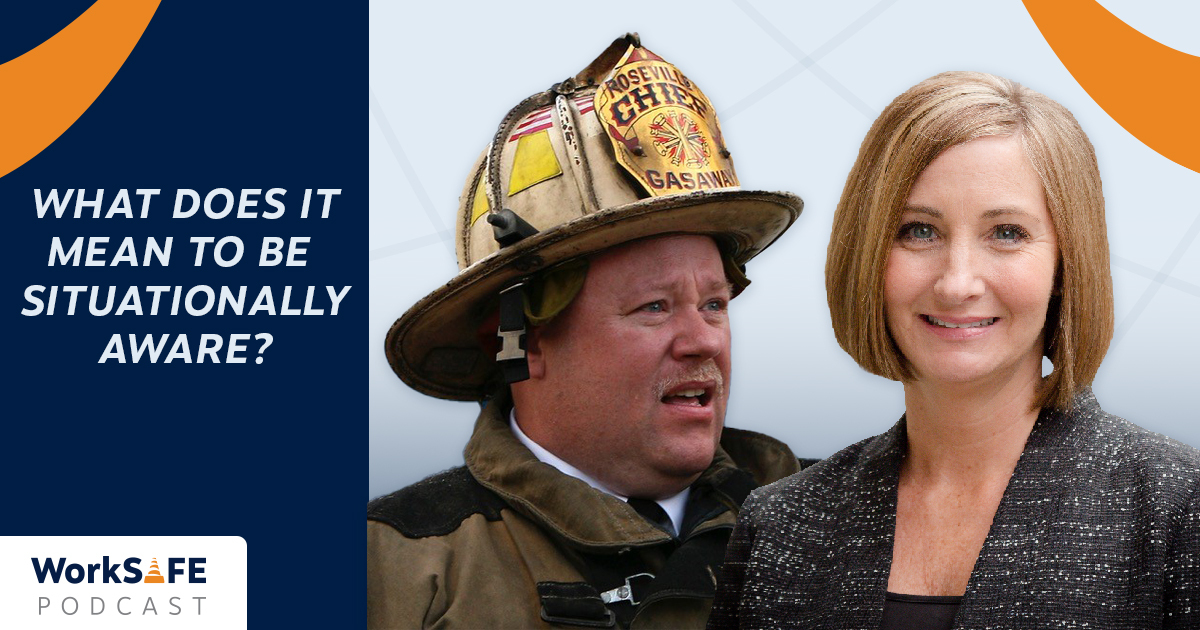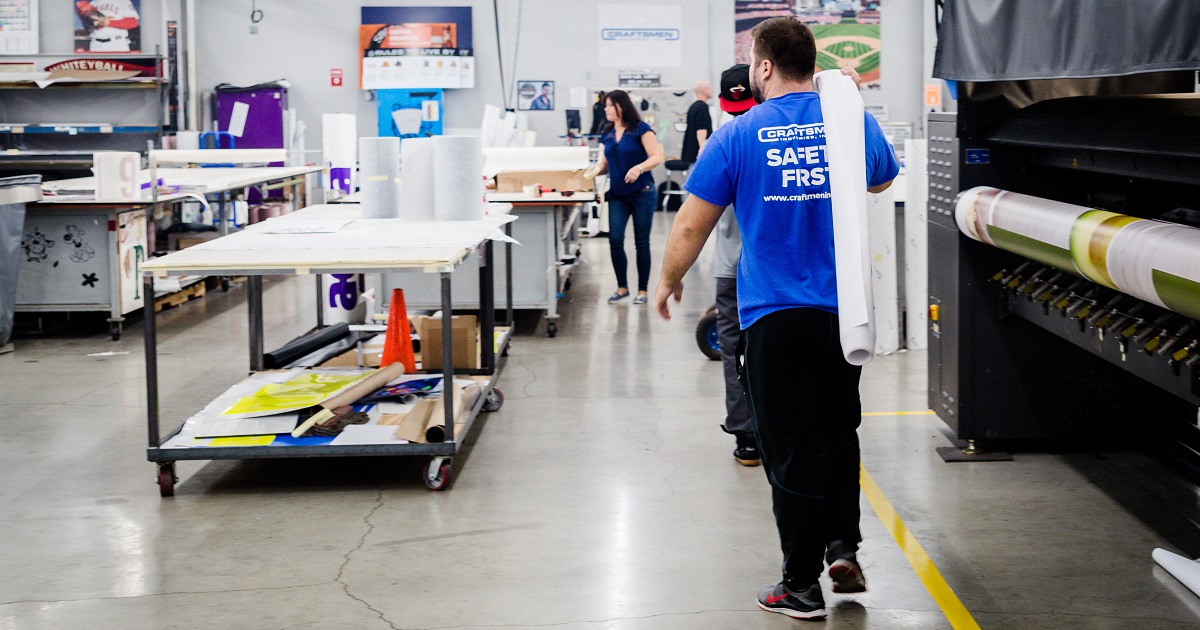For Media Inquiries
Contact Revee White, Director of Marketing and Communications at rwhite1@mem-ins.com or 573.499.4190.
A consistent work day is common for many employees. Each morning, they use the same tools. They see the same coworkers. They may even run into the same safety hazards. Every day, they know what to expect.
But what happens when they shift to a new work environment? With different tools, or different people? Maybe they’ll be driving a company vehicle for the first time. The same rules don’t apply anymore. How do we adjust our level of awareness to stay safe? How can employers prepare employees for unexpected situations?
On this episode of the WorkSAFE Podcast, we’re joined by Dr. Richard Gasaway, founder of Situational Awareness Matters!™. Gasaway is a former first responder. He completed a 30-year career before founding his organization. He commits to improving how people and teams respond to stressful environments.

First, we’ll discuss the basics of awareness. Then, we’ll talk the factors that compete for an employee’s attention. Finally, we’ll share how employers can prepare their teams for the unexpected.
Listen to this episode on the WorkSAFE Podcast, or read the show notes below.
Reduce injuries: Close calls matter
First responders see a lot of close calls. It’s important for them to be aware all the time. They need to make smart decisions. The lives of their patients and team members depend on it. Most importantly, the consequences can be severe if they don’t.
For the average employee, every decision isn’t as serious. Gasaway works with companies that have different needs. Sometimes, employers need to prevent basic injuries. “In industry, I’ll have companies contact me and say “Look, we’re just interested in having our employees stop hitting their heads on pipes as they walk down a corridor’.” These injuries aren’t life or death. However, they do mean stitches and an incident report. Moreover, it can turn into a bigger issue.
An employer’s goal should be preventing injuries. Having employees be aware of their environment is an important first step to do this.
What is situational awareness?
Most employees think being aware just means paying attention. For example, it might be mean watching for hot pots and pans in food service. A delivery truck driver might be careful to park somewhere safe before unloading. An elementary school teacher might push in desk chairs to avoid tripping in the classroom.
But Gasaway knows awareness is much more than the simple tasks we do to stay safe. He shared three key elements of situational awareness:
- Perceive. Are there any potential hazards in the work area?
- Understand. What does that hazard mean?
- Predict. Could the hazard injury someone? What kind of problems could it cause?
Employees can use this process in any situation. For instance, an employee might bring snow into a workspace on their shoes. Seeing the snow on the floor is perceiving. Knowing the snow will melt and create a slippery surface is understanding. Recognizing the melted snow will become slip hazard is predicting.
Above all, the goal of situational awareness is to prevent bad outcomes. Employees need to ask the right questions. But they also need to know to take action.
Common distractions: 4 things that steal employee attention
Being aware in every environment is important. However, there are hidden distractions we may not be aware of. They are called barriers. Gasaway identified some of the most common barriers we run into:
- Mind drift. Your mind focuses on something other than the task at hand. For instance, driving while talking to passengers can pull your attention from the road. As a result, you may not even remember how you got to your destination.
- Routine. Doing the same task over and over can lead to boredom. Driving the same familiar route every day can cause you to be less aware of hazards.
- Overconfidence. Sometimes bad habits don’t result in consequences. If nothing bad happened in the past, then we may believe nothing bad could happen in the future.
- Complacency. Some employees have done the same job for several years. Consequently, they may stop looking for hazards around them.
Not every employee experiences an incident on the job. They may think it means they are skilled in avoiding hazards. But situational awareness is just as important for new employees as long-standing ones. “They’re not being successful because of skill, they’re being successful because of luck,” Gasaway added. “And if people are lucky enough, long enough, they can be fooled into think that luck is a skillset.”
Work environments are always changing. Therefore, employees need to be prepared for the unexpected.

Situational awareness: Preparing your team for the unexpected
Every time we do a task, our mind creates a script. A script is a memory that helps us get things done. For example, your mind has created a script for driving to the grocery store. So even if you are distracted while driving, your mind knows which roads to take and can get you there.
However, scripts only offer so much help. If you have never experienced a situation, then your mind doesn’t have a script for it. Gasaway gives the example of a deer jumping into the road. If that’s never happened before, then what will you do? Gasaway challenges employers to prepare their teams for the unexpected. There are three ways they can do this.
Mental practice
An easy way to prepare for a situation is to imagine it. Gasaway calls this method mental rehearsal. In other words, employees can simply think about high risk situations.
Encourage employees to think about possible situations. What would they do? How would they react? Have them answer these important questions. In addition, there are no consequences when just thinking about a situation.
Physical practice
Mental practice is a great way to prepare for a future situation. “Those what-if scenarios help to build scripts into the subconscious,” Gasaway explained. However, our brains remember what we physically practice. Firstly, think about some situations employees might run into. Then, walk through the situations together with your team.
For example, what if a fire happened in a work area? Gasaway knows there is danger in being unprepared. Most people tend to leave a building the way they came in. Consequently, they often choose a more difficult escape route, like the front door, than a close window. Walk emergency exit routes. Employees are more likely to remember them if they’ve walked them before.
Develop an action plan
The best way to prepare for the unexpected is to tackle possible outcomes. Pose “What would you do?” questions to your employees. Create a possible situation. What would you see? What would you smell? Where would you go? Answering these questions together with your team is a great way to prepare. As a result, they won’t be caught off-guard in new situations.
For Gasaway, preparation is critical. It can be hard to avoid barriers, like boredom and routine. But asking the important questions – and practicing them in advance – can help your employees stay aware and know what to look for.
For free safety posters, sample policies, and safety toolkits, visit our Resource Library. Then, tune in this WorkSAFE Podcast episode to learn all about hosting safety meetings for your teams.
